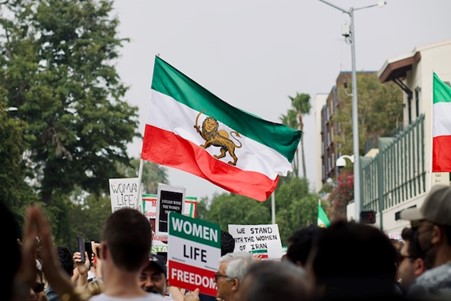Recently, the issue of women’s rights in Iran has come to the forefront once more. Below, Amy Mousavi discusses the current issues facing Iranian women, and why they are taking a stand?
The current protests in Iran have risen from the unexplained death of a 22-year-old Iranian woman detained by Iran’s morality police for wearing her hijab incorrectly. However, the fight for women’s rights in Iran is many decades old, in a country where they are oppressed by religious beliefs that view them as inferior.
The Barriers Facing Iranian Women
Under Iranian law, which is currently the Islam law, women are heavily restricted. Under Islamic law, Women are essentially seen as the property of a man. When they are unmarried, they are seen as the property of their fathers, and when they are married, they become the property of their husbands.
This means that women are carefully monitored and restricted. For example, women must get permission from their husband or father to travel and are often accompanied by a chaperone. If do receive permission, then they must make sure that they are wearing a veil, and everything except their face and hands should be covered. To not do so is a criminal offense.
Iranian women are also barred from certain events or venues, such as sports stadiums, and should they appear in a court of law, their testimony has one half of the value of a man’s testimony.
A Brief History of Iranian Women’s Rights
From the 1940s until 1979, Iran was under the rule of Mohammed Reza Pahlavi. Although the country’s main religion during this time was Islam, there was no requirement of anyone to adhere to the faith, with many Muslims primarily just keeping the Qu’ran in their homes and nothing more.
Women during this time had freedom, including being able to dress how they wished. It is common in photographs from this era to see women wearing fashionable clothing with beautiful hairstyles.
However, in 1979 the Islamic Revolution saw Pahlavi dethroned and instead the nation fell under the grip of radical Islamic clerics, who had the backing of the American administration at the time under Jimmy Carter.
After this, the rights of many were severely restricted, leading to protests such as the Green Protest, the student protests, and the Pink Revolution.

The Current Struggle
At this present moment, Iran looks to be on the verge of another revolution. This time, people have been spurred into action following the death of Mahsa Amini, a 22-year-old woman who was detained for not wearing her hijab in the proper way and subsequently died soon after leaving custody in a coma on September 16, 2022.
The people of Mahsa’s hometown rose up in an uproar, as did many others. It was not just women who joined forces, there were men among their number too, supporting the cause and standing up against a regime that most of them weren’t even alive to see take shape.
The current situation is a bloody one, with the Iranian authorities keen to restore order. During these protests over 400 people have been killed, and over 15,000 have been arrested. The majority of them are young, and 6 of the dead are children.
Out of it all, 3 words remain prevalent: “Women. Life. Freedom.” As women are silenced, it is up to the rest of the world to carry their message and remind those still standing for their rights despite the bloodshed and tyranny that they are not alone.
In Conclusion
For decades now, women in Iran have faced discrimination, oppression, and violence at the hands of the regime. We should continue to condemn these radical policies and advocate for the Iranian women affected any way that we can.
What is happening today matters in terms of both human rights social and economic development. Internationally, governments, politicians, and volunteer organizations have continued to put pressure on the Iranian government to address the issues of gender inequality and discrimination.
This includes the United States, which introduced a resolution in December 2022 to have Iran removed from the UN Commission on the Status of Women. The resolution received 29 votes in favor and eight against, with 16 countries abstaining.
It’s crucial to keep this issue in the spotlight, here and abroad, until real and permanent change is achieved, and all Iranian people feel equally protected under the law.

